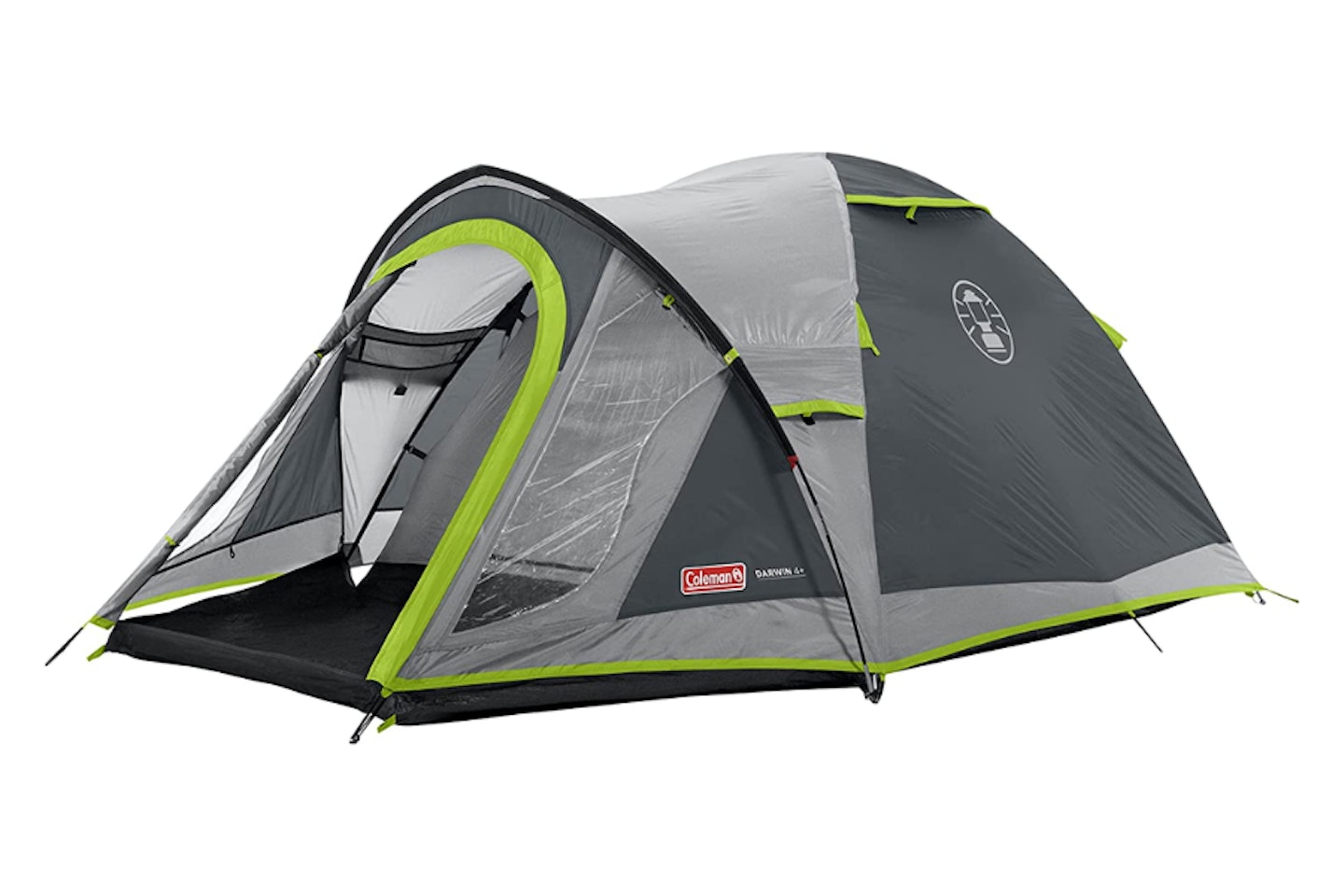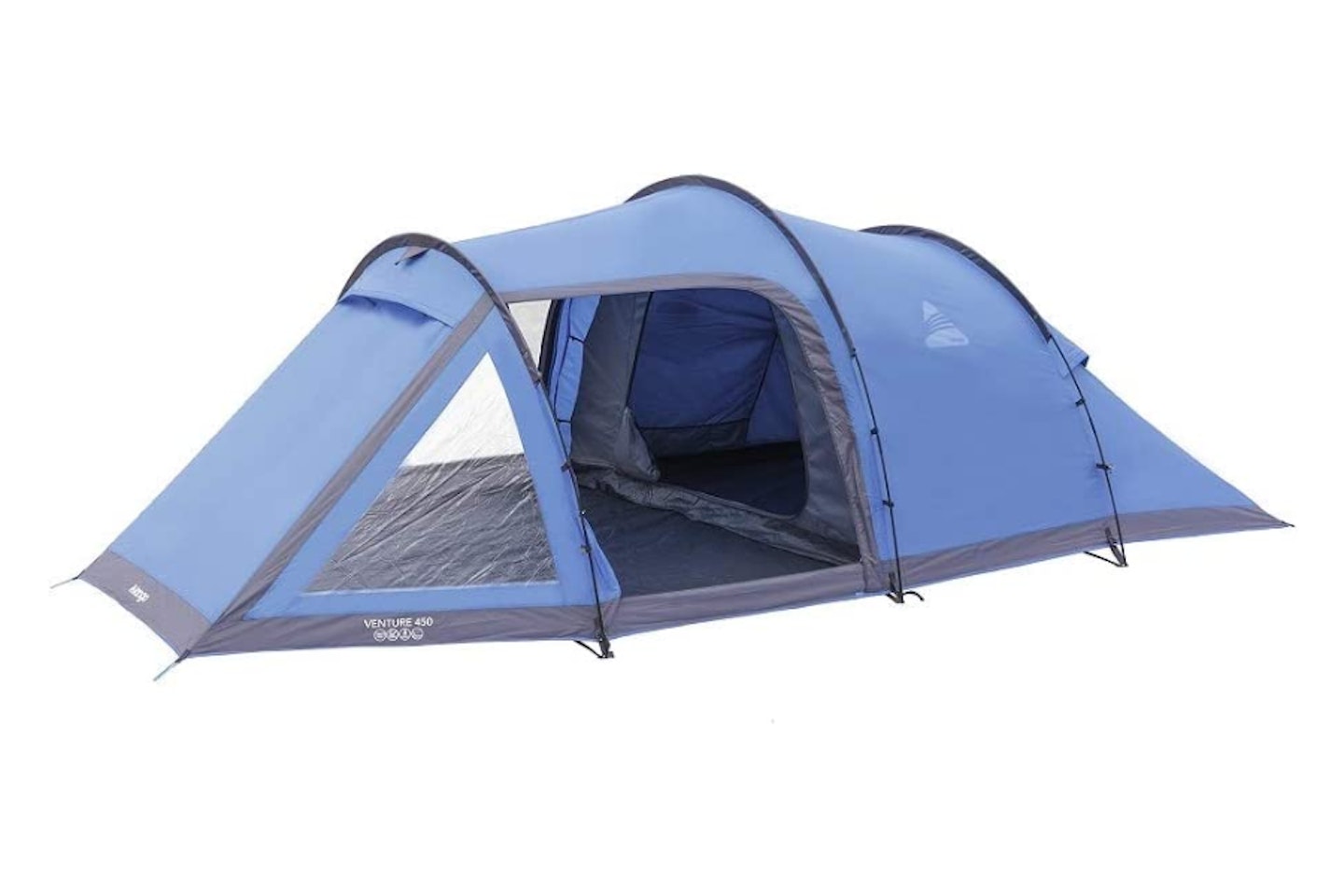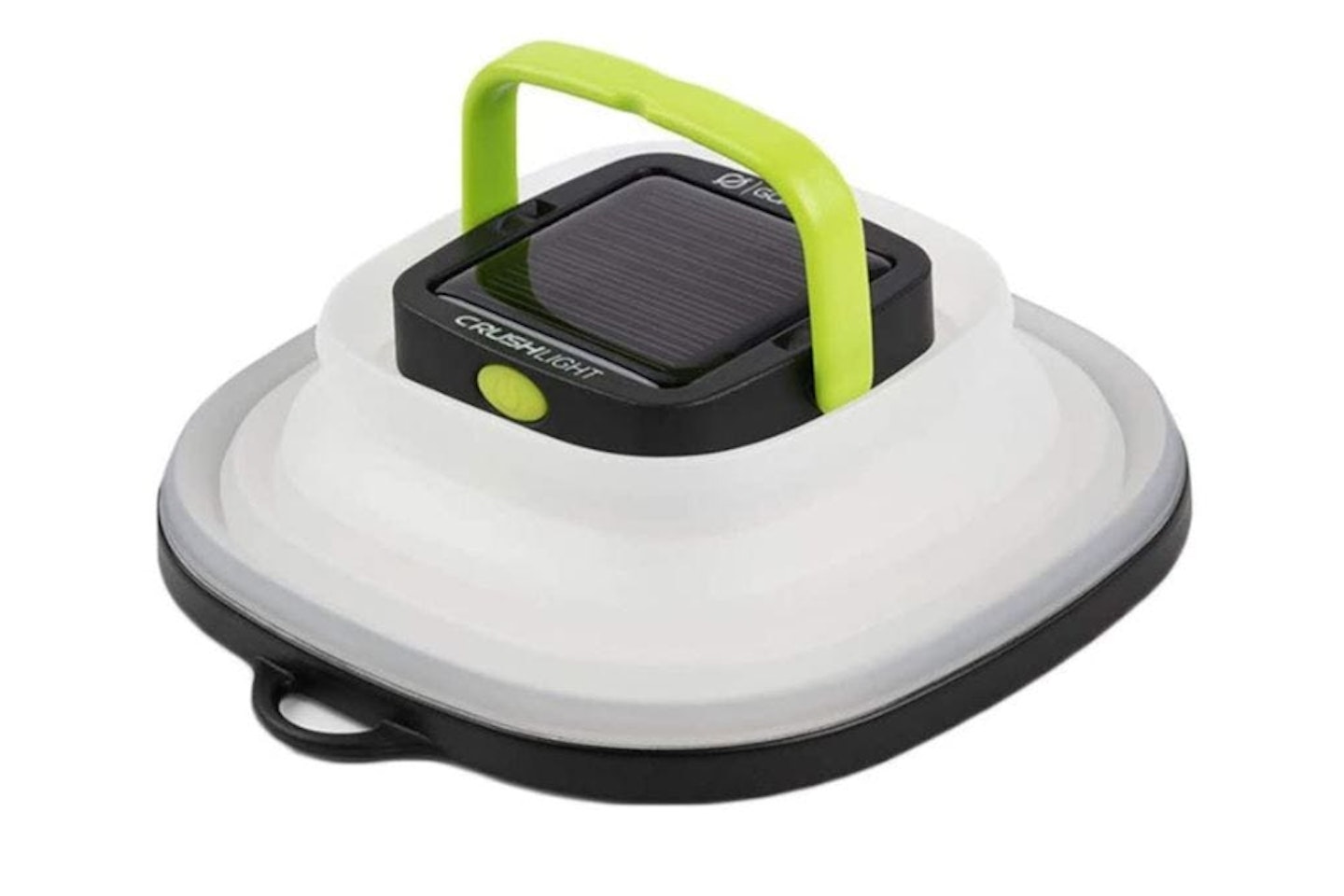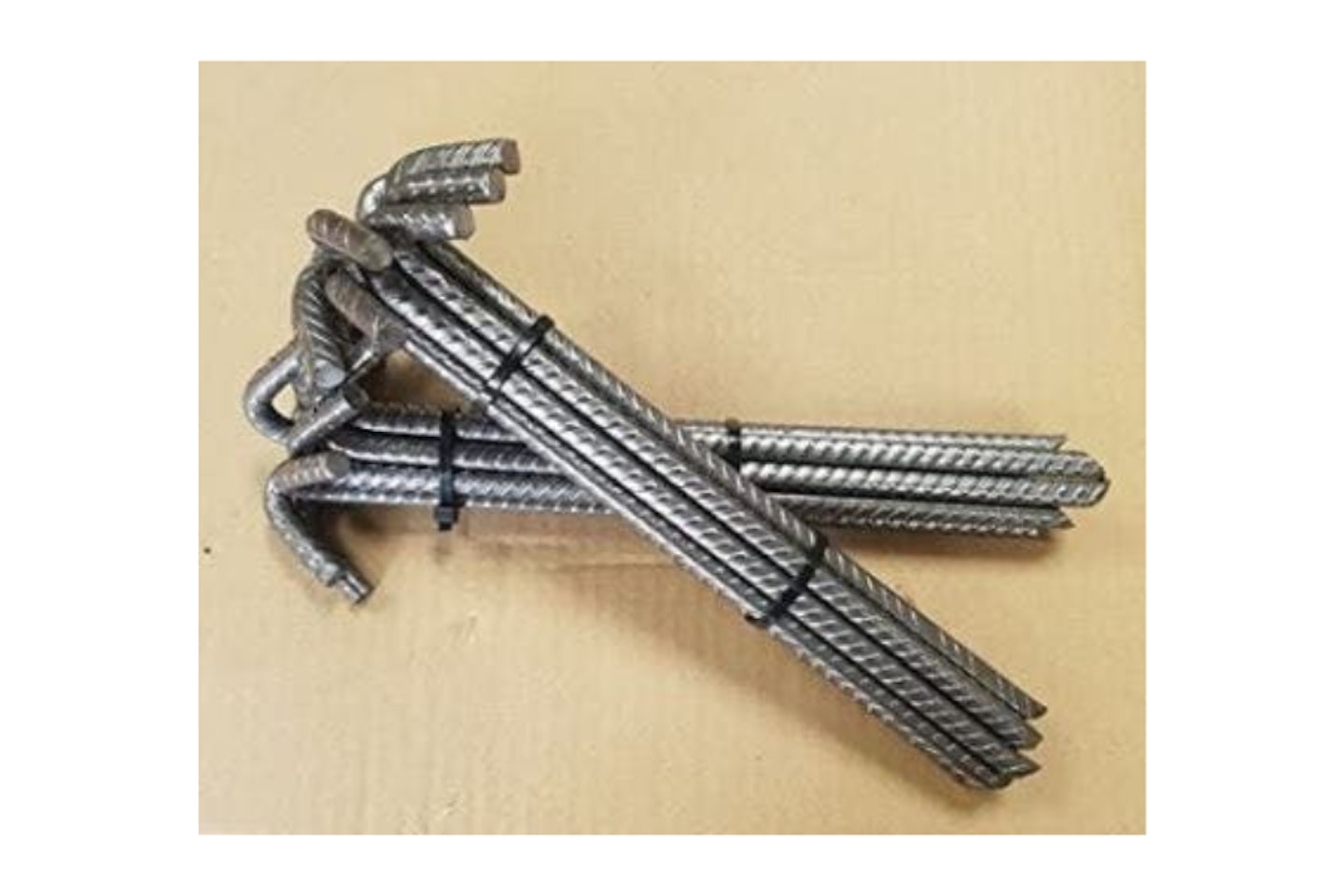When it comes to camping gear, the best tents are almost as varied as houses in terms of design. What looks like a tiny dome can actually be a very functional three-man tent inside, and some of the best four-man tents are equally clever when it comes to space management. But, as your number of guests grows, there needs to be a larger emphasis on function too.
One thing to keep in mind is portability. It's all very well getting a large 4-man tent, but if you really needed to be able to put it up on your own in a gale you'll quickly wish you had gone for a more compact and rigid design.
The key thing here is to consider what type of camper you are. All tents, even the smallest two-man tents, will handle fair weather and the typical British mix of wind, rain and sun; but not all will be up to a storm on the moors in winter. So, we've put our selections of the best 4-man tents into handy categories to help narrow things down.
As mentioned above, when hunting for a new tent it’s important to understand the features. For example, some are designed to give as much space as possible, some to be as light as possible.
Best four-man tents in 2025 at a glance:
• Best overall: Coleman Coastline 4 Deluxe – View on Amazon
• Best budget: Vango Venture 450 – View on Amazon
• Best for new campers: Trail Hartland 4 Man 2 Room Tent – View on Amazon
• Best for families: Coleman Valdes Deluxe – View on OnBuy
Some go the extra length in having extra dark bedrooms; some put easy pitching first. And then you have inflatable pole systems, different waterproof ratings, and UV resistance levels. The list goes on.
Thankfully, our experts have created the ultimate buyer’s guide to the best four-person tents at the end of the article.
Our comprehensive shortlist of the best four-person tents includes budget-friendly options, spacious designs, and more rugged options for harsher conditions. So, with our tent pegs packed and our pitch booked, let's venture out.
All prices are correct at the time of writing. Prices, stock and deals are subject to change without notice.
The best four-man tents 2025
Best overall

A simple tunnel tent with two bedrooms and a front room. It is easy to pitch (Coleman says it can be set up by two people in a short time), and casual campers will adore the generous headroom.
The polyester fabric is watertight and wind-tight, while the inner tent is breathable and contains a mosquito net to keep out unwanted visitors. The floor tarpaulin helps protect from rain and insects. There are two large sleeping chambers, an awning, PVC windows, and space for tables and chairs. It also has ventilation chambers to improve air circulation.
This is a well-priced tent with lots of space and will stand the test of time because the Coleman brand has proven itself over the years. We like that it provides SPF50+ sun protection too.
Pros
- Excellent headroom and feeling of space
- Easy to put up
- Dividable bedroom area
- Sewn-in groundsheet
Cons
- Requires careful construction to resist heavy rain.
- An angled entrance means an optional zip-on porch is a good idea for poor weather
| Style: | Tunnel |
| Rooms: | Two bedrooms and front room |
| Waterproofing: | 3000mm HH fly, continuous welded polyethylene tarpaulin floor |
| Outer dimensions: | 420cm (L), 290cm (W), 200cm (H) |
| Weight: | 13.5kg |
Best for new campers
This is ideal if you're unsure camping is the holiday of choice for you and want to test the waters before committing to a more expensive model, or you need something no-frills for occasional use.
Tried and Tested by Adam Binnie:
"Trying new things as a family can be tricky – you don't want to spend hundreds of pounds on an activity when you're not 100% sure the kids will enjoy it, but if you budget too little and end up with something flimsy and unsubstantial, then you can guarantee nobody will have a good time.
Much like its Portofino stand-up paddleboard that we reviewed, Trail Outdoor Leisure's Hartland four-man tent is everything you need to get started without compromising on price or quality.
My wife, two kids, and I went camping in this tent during the summer - it was easy to pitch, spacious enough inside for all our kit, and felt like it was constructed to last for more than one holiday. Tents at the lower end of the price spectrum can often feel like they are disposable items, but the Hartman's seams and zips are robust.
The groundsheet isn't sewn in, and space-wise, the rooms are a little tight for taller campers (I'm 6 foot 2 and just about fit), but otherwise, we got on just fine, the kids and both parents enjoying a decent night's sleep in a warm and dry tent.
It takes up a fair bit of room when packed away but on the flip side of this, it's not a total pain in the neck to put back in the bag. Everything fits neatly without having to be installed in a specific order. A bit basic compared to some of the fancier items on this list but rock-solid and dependable nonetheless."
Pros
- Dark Zone Bedroom Technology for better sleep
- Suitable for all seasons (except winter)
- Double-skin for insulation
- Hydrostatic Head of 3000mm for superior rain protection
- Sunshade on entrance
Cons
- Groundsheet not sewn-in, so buy a separate one
| Style: | Tunnel |
| Rooms: | 2 two-person bedrooms and living room |
| Waterproofing: | 3000mm HH fly |
| Outer dimensions: | 420cm (L), 210cm (W), 140/115cm (H) |
| Weight: | 6.5kg |
Best for headroom

www.diy.com
A similar design to the Coleman Coastline, but a bit bigger. Thanks to its waterproof rating, there is some extra peace of mind if the heavens open on your camping trip. The poles are Powerflex – high-grade fibreglass, for easy assembly and resistance to the elements.
The living area is nice and spacious, and the layout is perfect for two couples or parents and children. You can even remove the inner divider to create one extra-large bedroom. The Stargrove II 450 has a good amount of headroom for people who want it. It’s good value and the lighter shade of grey on the roof is an excellent touch to reduce heat absorption. Another excellent feature is the addition of Vango's Nightfall fabric to the bedrooms for less light intrusion in the morning. It has a fully sewn-in groundsheet to keep out creepy-crawlies, while mesh doors and ventilation panels help to improve air circulation.
Pros
- Fibreglass poles
- Sewn-in groundsheet
- 'Nightfall' bedrooms for darker rooms in the morning
- Extended living area
- AirZone panel for ventilation
Cons
- No internal pockets for storage
| Style: | Tunnel |
| Rooms: | 2 double bedrooms and front room, Built-in Front Extension |
| Waterproofing: | Sentinal Active 62gm polyester fabric, 3000mm HH Fully Sewn-in groundsheet |
| Outer dimensions: | 2.65L x 0.9W x 1.75H metres |
| Weight: | 17kg |
Best compact four-man tent

The compact design of the Darwin 4+ is very deceptive from the outside, but it does indeed cater for four adults. It also has some extra stability to deal with bad weather thanks to its shape and fibreglass poles. The built-in air flaps allow air to circulate freely to reduce stuffiness, while there’s an awning that’s large enough to store equipment and shoes. It also has SPF50+ UV protection, which is another positive.
It's the ideal four-person tent for groups or families who camp in places prone to slightly more enthusiastic weather or couples who need extra space. We recommend this tent to groups who camp beyond a sheltered camping ground. It’s impressively light for a four-man tent at just 6.4kg and maintains very respectable interior space. It’s ideal for day trips or trekking.
Pros
- Compact portable design
- Light yet sturdy
- 100% waterproof
- UV protection
Cons
- Hard to put up in windy conditions without help
| Style: | Geodesic |
| Rooms: | Sleeping area 5.5 m² living area 2.3 m² |
| Waterproofing: | 3000mm HH |
| Outer dimensions: | 330 x 200 cm with a height of 130cm |
| Weight: | 6.2kg |
Best inflatable four-man tent
The luxurious feel of quality to this tent makes it very attractive for longer camping trips. It's not the cheapest here, but you can't beat the build quality and ease of pitching.
The poles/tubes are inflated using the supplied pump as you'd expect, but those are seriously shored up with Vango's patented TBS II tension band system for extra rigidity. Large windows and an awning in the front give an amazing feeling of space.
There are two doors on this tent – a mesh door on the front, and a canopy over side door. A linked-in PE groundsheet keeps bugs out in the living space. The bedrooms are well-ventilated, darker in the morning to stop you waking up too early, and room dividers add privacy.
It’s a generous size for four people (it's actually rated for five) and it has the best front room of all the tents here. The material is also Protex 70 waterproof, and a fire-retardant flysheet (4,000 HH) finishes off this brilliant four-man camping option.
Pros
- Strong structure
- Fast and easy pitching
- Flexible space
- Clear windows
- Airbeam technology
Cons
- Manual pump
| Style: | Inflatable tunnel |
| Rooms: | One bedroom (dividable) and front room |
| Waterproofing: | ProTex 70D 4000 mm HH Polyester |
| Outer dimensions: | 5.85L x 3.2W x 1.97H metres |
| Weight: | 18.1kg |
Best budget

The go-to four-person tent for anyone wishing to stick to a budget. It has impressive space and a good waterproof rating. It's light too, which makes it great for quick weekends away in spring or summer. It comes with an oversized carry bag to make it as easy as possible to put it away once you’re finished with it.
It has a single sleeping pod for up to four people, probably most suitable for a family group. The sleeping pod is designed to stay dry even when it’s raining. The porch area is well covered, so it can be used to store shoes and rucksacks. The tent also has built-in PVC windows to let in more light.
For anyone breaking into the world of camping, this is a great option. It’s quite low-profile, which means it doesn’t catch the wind so much. We love how light it is, its value, and its darkened bedroom.
Pros
- Excellent brand and build
- Protex Flysheet
- Good ventilation
Cons
- Requires careful setup to resist heavy rainfall
| Style: | Tunnel |
| Rooms: | One bedroom and front room |
| Waterproofing: | ProTex 70D 3,000mm HH Polyester |
| Outer dimensions: | 155cm high, 480cm long and 270cm wide. |
| Weight: | 8.2kg |
Best large tent for families
Okay – we own up. This is clearly a six-man tent, right? No, it is indeed designed for four people, but what better luxury can you think of other than lots of extra room?
Space is everything when it comes to comfort, and this can take two double beds if that's how you prefer to snooze. A full-size family tent for the annual summer camping trip. Ample space, horizontal and vertical; blackout liners for the bedroom (that blocks 99% of the light) and helps keep the space up to 5 degrees cooler during the day, and 1 degree warmer at night. For such a big tent, it’s incredibly easy to pitch thanks to inflatable poles – Coleman says that it can be pitched by one person, if required. It also has SPF50+ UV protection, to keep you and your fellow campers safe from the sun’s rays.
If, above all else, you want space for the family, this is your best option. Its best features are the large and flexible living spaces, porch, sewn-in groundsheet and excellent liveability for long camps.
Pros
- FastPitch Air technology for swift pitching
- Removable porch
- Backout bedroom
- Sturdy build
- Tons of living space
Cons
- Large when packed, so not as portable at some
| Style: | Large tunnel |
| Rooms: | Two bedrooms, one front room, and a porch |
| Waterproofing: | 4500mm HH, Fly: Polyester PU Coated with Taped Seams |
| Outer dimensions: | 665 x 310 x 215 cm |
| Weight: | 43.4kg |
Best for extreme weather

www.outdoorgear.co.uk
A different beast from the rest. A large, but ultralight technical tent built to deal with all but the most extreme weather. It’s ideal for a group of hikers wanting a single tent for space-saving purposes. It's much lower than the other tunnel tents and uses two fly fabrics in the lower section of the tent to improve abrasion resistance.
There’s plenty of room for shoes, rucksacks and other gear. There’s one large door for easy access to the main part of the tent, while a smaller hatch at the end of the tent makes it easy if you just need to grab something from your kit, without going back inside.
Packed down, this tent is 21cm x 44cm and weighs just 4.39kg, making it amazingly compact for its size. We particularly recommend this to folks keen on camping in rugged places off the beaten track. We love how easy it is to pitch, and how durable it is. It’s well worth the investment for those who would suit it.
Pros
- Extremely tough
- Well-thought-out internal space and doors
- Lightweight
- Amazing waterproofing
- Four season tent
Cons
- Ventilation will rely on the open door in hot summers
| Style: | Low-profile tunnel |
| Rooms: | One bedroom and front room |
| Waterproofing: | 3000mm HH fly, 6000mm HH floor |
| Outer dimensions: | 540cm (L), 240cm (W), 125cm (H) |
| Weight: | 4.4kg |
Best four-man tents in 2025: Buyer's guide
Waterproof ratings explained
Waterproof ratings are very simple but widely misunderstood – or not known at all. All the tents you see here use hydrostatic heads as a means of showing how waterproof the fabric is. Hydrostatic head (HH) is the industry standard for measuring waterproof fabrics; the waterproof fabrics used for tents, waterproof jackets, and so on.
The figure given (for example, 3000mm), indicates how high a column of water sitting on the fabric would need to be before water begins seeping through. It’s perhaps a slightly odd thing, but it’s an effective means of measurement.
It’s all to do with pressure. Obviously, testing labs don’t actually use such volumes of water, they use machines that apply downward pressure. Thus, a tent with a hydrostatic head rating of 3000mm can withstand a three-metre column of water before it leaks through. That sounds like a lot, but see below for our guide to waterproof ratings:
1000mm: Will keep out light rain – more water resistant than waterproof
2000mm: Waterproof. Will keep out the rain.
4000mm: Will withstand fairly heavy rain.
10,000mm+: This is what you should expect in hiking and ski jackets. They have to deal with rain and snow but also the extra pressure applied by backpack straps and so on.
For tents, a minimum of 2000mm is what you want. And don’t forget that the floor should have a higher rating because it has the extra pressure off of you, plus your gear pressing down on it.

Tent shapes
There are many shapes and designs of tents, but here we're looking at the most common ones to be found when you're looking for the best 4-man tents.
We recommend you choose your shape to suit the pitch locations you'll be mostly using. So, festival tents might need to be a little more compact and sturdy to withstand the elements and more. While others will be a little less utilitarian and more spacious for a longer holiday.
Tunnel tents
• Easy pitching
• Spacious
• Heavy when packed down
• More weather resistant than dome tents but aren’t too happy in drenching rain either.
Tunnel tents are very popular with weekend and summer campers because they are easy to pitch and provide a lot of space inside (vertical and horizontal).
Most of our picks are tunnel-style tents and you can distinguish which these are by their half-cylinder shape. Whether using traditional poles or an inflatable design, tunnel tents are easy to split into multiple rooms and are very popular with families for this reason.
They are fast replacing dome-type tents because tunnel tents are a bit more weather-resistant too.
Dome tents
• Cheap
• Fairly light
• Unstable in bad weather
• Have single zones only and no entrance/porch
Dome tents are very popular with casual campers too. However, none have made it to our shortlist because we have found that the new tunnel tents edge them out in terms of performance.
Geodesic tents
• Capable in harsh weather
• Lightweight
• Generally unsuitable for casual camping
• Often a pricier option
Geodesic tents are kind of like upgraded dome tents. They have extra criss-crossing support poles which makes them much more adept at dealing with high winds.
Because they are designed to cope with harsher weather, geodesic tents sacrifice space and are a little more complex to pitch than other styles. They are wonderful for those camping in more extreme environments but less suitable for casual campers and families.
Tipi/pyramid tents
• Easy to pitch
• Vast range of sizes
• Deal well with bad weather
• Sloped walls rob interior space
• Some come without a floor
Tipi/pyramid tents are defined by their tall central pole. They come in a big range of sizes and are used as lightweight hiking tents, but more recently have found favour with those seeking the glamping experience.
They are fairly easy to put up and even stand up well against the elements, but inside space cannot compete with tunnel tents.
Best 4-man tents: Useful camping accessories
Best tent pegs
Frequent campers often run into trouble with supplied tent pegs pulling from the ground when the wind gets up or bending out of shape over time. These ribbed steel pegs will solve these issues and hold your tent down like a magnet. They are 10mm thick and 290mm long with a sharp pointed end for piercing hard ground or stones.
Pros
- Strong
- Well-priced
Cons
- Could do with being thicker
| Dimensions: | 290mm x 10mm |
| Material: | Steel |
Best waterproof tarpaulin

A tarpaulin is a must for campers pitching for a decent length of time. Put underneath the floor of your tent, a tarpaulin gives extra underfloor waterproofing and keeps the underside of the tent cleaner.
It'll also mean that if you do get caught in a minor ground flood, your camping bed and the rest of your kit will stay nice and dry.
Pros
- Packs away well
- Quality eyelets
Cons
- None at this price (but hope you like blue)
| Size: | 4.8 x 6.1 m |
| Material: | Polyethylene (PE) |
Best solar charging camping light

Goal Zero is an innovative and growing American company that strives to deliver amazing power solutions in far-flung corners of the world. The company's vision began in the Democratic Republic of Congo in 2008 where it developed power products to rural communities with no access to electricity or power.
Goal Zero’s Crush Light is affordable and brilliant. It’s collapsible with several brightness settings up to 60 lumens. You can get up to 35 hours of run time, and the lamp is easily rechargeable, either from the solar panel on top or by plugging in a micro USB (supplied).
Pros
- Space-saving collapsible design
- Bright
- Solar charging
- 35-hour runtime on low setting
Cons
- Definitely for functional spaces and ambience – not a torch
| Dimensions: | 42 x 170 x 227 millimetres |
| Weight: | 91 g |
| Power: | 60 lumens |
Best camping light

This is both a lantern and a power bank. It has a brightness of up to 400 lumens. Hang it up or put it on a surface with its adjustable legs. You can have one side lit, or both giving all-round 360-degree light. Depending on settings, you can get up to 48 hours of run-time.
There is also a 5,200mAh battery and a USB output that allows you to charge devices too. The lantern itself can be recharged via USB or by using the crank handle on top.
Pros
- Long run-time
- Dual function
- Small and lightweight
- Two lighting modes
Cons
- Takes eight hours to charge up fully
| Dimensions: | 4.5 x 5 x 6.5 inches (when open) |
| Weight: | 498 Grams |
| Power: | 2 dimmable LEDs 2 x 3 W, 600 lumens |
Best camping solar panel

If you are heading somewhere where mains electricity is not available, a portable solar panel is a great essential. At about 300g, this Powkey one is lightweight and charges devices via a USB output.
Pros
- 22% conversion efficiency
- 4 output ports
- Foldable kickstand
Cons
- A little weighty
| Dimensions: | 46 x 36.1 x 5.6 centimetres |
| Weight: | 3 Kg |
| Special features: | IPX4 waterproof |
FAQs
Does a four-man tent really fit four people?
Despite their name, four-man tents really come in various sizes. Obviously, a compact four-person tent is going to assume you're an average-sized adult with at least a sleeping bag and some equipment. Whereas a model aimed at families might have lots of headroom as well as generous bedrooms. Often the average four-man tent will allow each adult to have an air mattress of some kind. As always, the important thing here is to measure up.
Is 3000mm waterproof enough for a tent?
A hydrostatic head value of 3000mm is normally enough to withstand typical rainfall in the UK. It is the first rung of the 'waterproof' rating rather than water resistance. For all-weather camping in harsh conditions, we recommend a higher rating.
Do tents need waterproofing?
There are various products on the market for looking after the seams and fabric of your tent. These include bundles like the Nikwax Camping Care Kit that will take care of UV and waterproofing. Most manufacturers do recommend applying these from time to time, or when you see signs of failure.
How many air mattresses fit in a four-man tent?
The best four-man tents, in our opinion, are the ones that let you get the best possible night's sleep. Like tents, air mattresses come in various sizes too. The size and shape of the bedroom in your chosen tent will dictate the number of mattresses you can fit into it. As mattresses are rectangular, even a single and compact airbed will fit more easily into a rectangular room than, say, a geodesic tent.
Subscribe to the What’s The Best Newsletter to keep up to date with more of the latest reviews and recommendations from the What’s The Best team.





